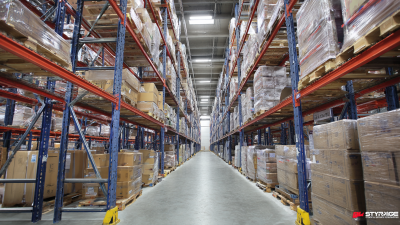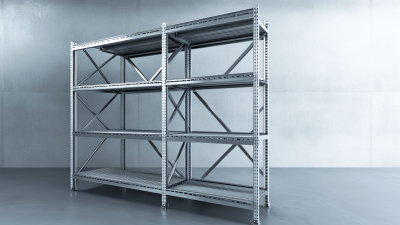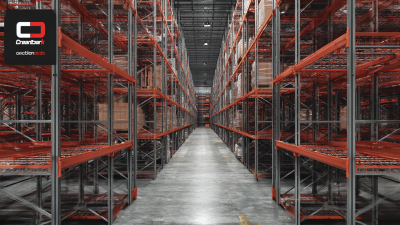How to Optimize Your Warehouse Space with Industrial Pallet Racks
In today's fast-paced business environment, optimizing warehouse space is crucial for improving efficiency and productivity. One effective solution to maximize your storage capabilities is by utilizing industrial pallet racks. These versatile storage systems not only help in organizing inventory but also allow businesses to make the most of their available square footage. By strategically implementing industrial pallet racks, companies can streamline their operations, reduce clutter, and enhance accessibility to products. This guide will explore various methods and best practices for optimizing your warehouse space with these essential storage solutions, ensuring that you can accommodate growing inventory demands while maintaining a well-organized and functional workspace.

Assessing Your Current Warehouse Space and Needs
Assessing your current warehouse space and needs is the first critical step in optimizing storage with industrial pallet racks. Start by conducting a thorough inventory audit to determine the volume and types of goods you store. Understanding the dimensions and weight of your products helps in selecting appropriate pallet rack styles and configurations. Your current layout should also be evaluated; consider aisles, access points, and the workflow to identify bottlenecks or underutilized areas.
Next, take a closer look at your operational needs. Are there seasonal spikes in inventory that require flexible storage solutions? Analyze whether your current shelving meets these demands or if adjustments are necessary. Gathering input from warehouse staff can provide valuable insights into daily operations and logistical challenges. Balancing efficiency and accessibility will guide you in choosing pallet racks that not only maximize space but also streamline the flow of goods throughout your facility.

Selecting the Right Industrial Pallet Rack System
Selecting the right industrial pallet rack system is crucial for optimizing warehouse space and enhancing operational efficiency. When choosing a pallet racking system, consider factors such as the types of products being stored, weight capacities, floor layout, and accessibility. A well-planned racking system not only maximizes vertical space but also allows for more effective inventory management. Take into account various styles of pallet racks like selective, drive-in, and cantilever racks, as each offers unique advantages based on your storage needs.
Furthermore, proper operation and maintenance of pallet racking systems are essential to minimize workplace health and safety risks. Regular inspections should be conducted to identify any signs of damage or wear, and staff members should be trained on safe handling practices. Implementing clear protocols for loading and unloading can prevent accidents and injuries. By ensuring that pallet racks are maintained and operated correctly, organizations can create a safer working environment while fully leveraging their warehouse capabilities.

Maximizing Vertical Space with Smart Rack Configuration
Maximizing vertical space in a warehouse is a critical strategy for improving efficiency and productivity. According to a report by the Warehousing Education and Research Council (WERC), effective space utilization can increase storage capacity by up to 30%, allowing companies to store more inventory without expanding their footprint. Smart rack configuration plays a vital role in achieving this optimization. By utilizing industrial pallet racks, businesses can stack goods vertically, leveraging the height of the warehouse to enhance storage capacity.
When configuring your pallet racks, consider implementing a mix of rack types based on the nature of your inventory. For example, selective racks are ideal for easy access to individual pallets, while drive-in racks can maximize storage density for bulk items. According to a study from Logistics Management, facilities that adopt multi-level racking systems report a 15-20% improvement in overall operational efficiency.
Tips: Always ensure that your rack systems comply with safety regulations. Regularly inspecting and maintaining your racking systems can prevent accidents and improve longevity. Additionally, utilizing inventory management software can assist in identifying the best products to store in high-bin locations, further optimizing your vertical storage capabilities.
Implementing Efficient Inventory Management Practices
Efficient inventory management is crucial for maximizing warehouse space and ensuring smooth operations. One effective strategy is to implement a systematic approach to inventory tracking. Utilizing technology such as warehouse management systems (WMS) can streamline processes by providing real-time data on stock levels, order statuses, and location within the warehouse. This transparency allows managers to make informed decisions regarding restocking and space allocation, ultimately preventing overcrowding and reducing the risk of stockouts.
Moreover, incorporating industrial pallet racks plays a significant role in enhancing inventory management practices. By selecting the appropriate type of pallet rack, such as selective, drive-in, or cantilever racks, businesses can tailor their storage solutions to fit various product dimensions and categories. This flexibility not only optimizes vertical space but also improves accessibility to items, facilitating faster picking times. Regularly auditing and reorganizing the inventory based on turnover rates ensures that high-demand products are easily reachable, further contributing to operational efficiency and productivity in the warehouse.
Regular Maintenance and Safety Checks for Pallet Racks
Regular maintenance and safety checks for pallet racks are crucial for ensuring a safe and efficient warehouse environment. Pallet racks, being an integral part of warehouse operations, bear significant weight and must be inspected routinely to identify any signs of wear or damage. A thorough inspection should focus on structural integrity, checking for bent beams, loose connections, and any visible signs of corrosion. Regular maintenance not only prolongs the life of the racks but also helps prevent accidents that can arise from structural failures.
In addition to visual inspections, it’s important to implement a systematic approach to safety checks. This includes training staff on proper loading techniques, ensuring weight limits are adhered to, and regularly addressing any identified issues. Documenting these checks can create an invaluable record of compliance and can help in planning future maintenance schedules. By prioritizing regular maintenance and safety protocols, warehouses can maximize efficiency while minimizing risks, ultimately creating a safer working environment for all employees.
Related Posts
-

The Future of Efficient Storage Solutions: Best Warehouse Shelving Racks Redefining Logistics
-

Top 10 Commercial Racking Manufacturers from China at the 137th Canton Fair
-

Top 10 Commercial Racking Manufacturers from China at the 137th Canton Fair
-

How to Choose the Best Pallet Rack Beams for Your Warehouse Efficiency
-

Future Innovations in Best Heavy Duty Pallet Racks for Supply Chain Efficiency in 2025
-

How to Optimize Your Warehouse Space with the Best Teardrop Pallet Rack: 2025 Tech Trends


